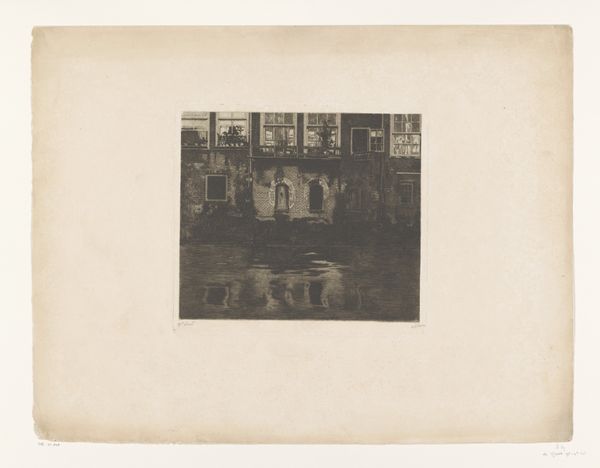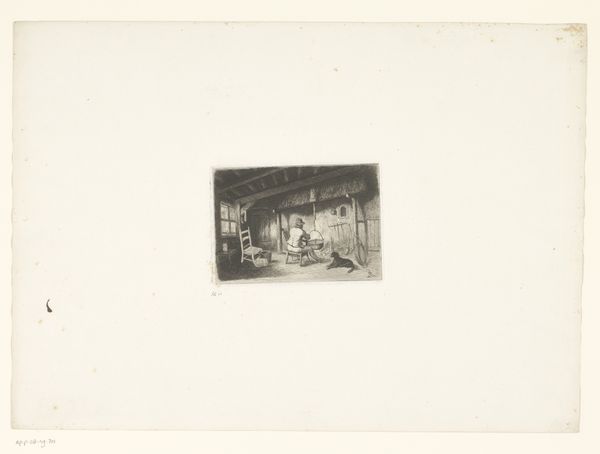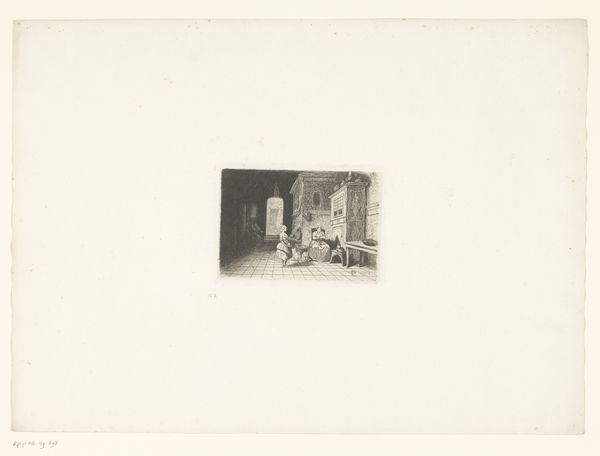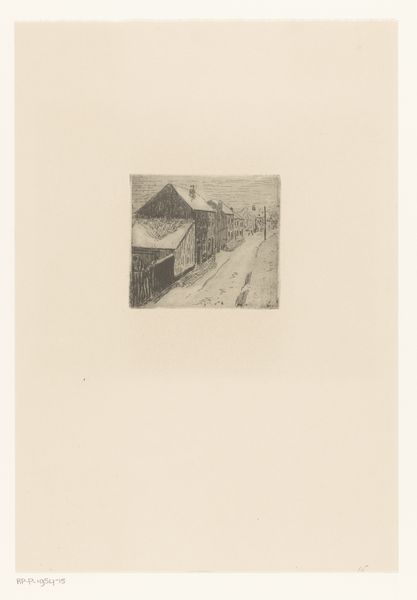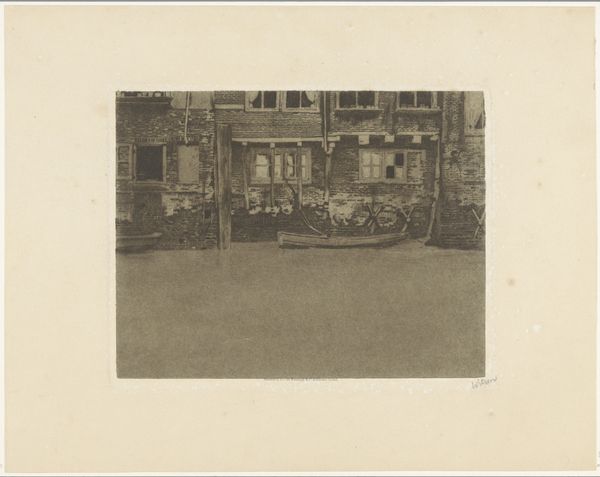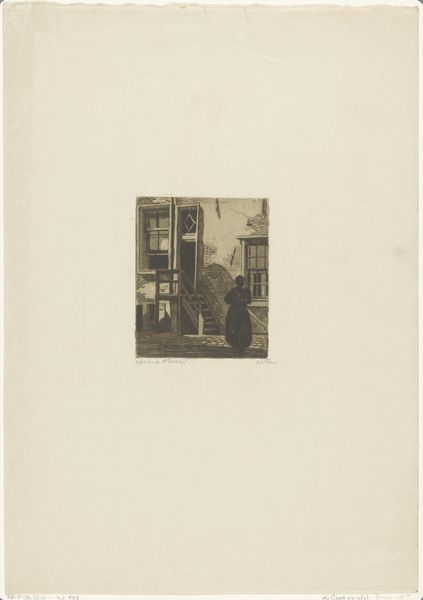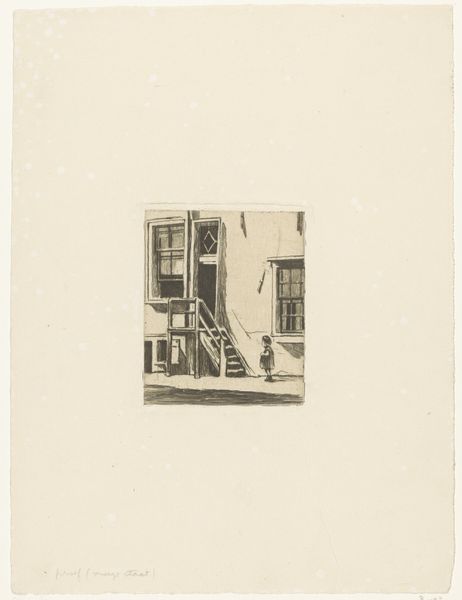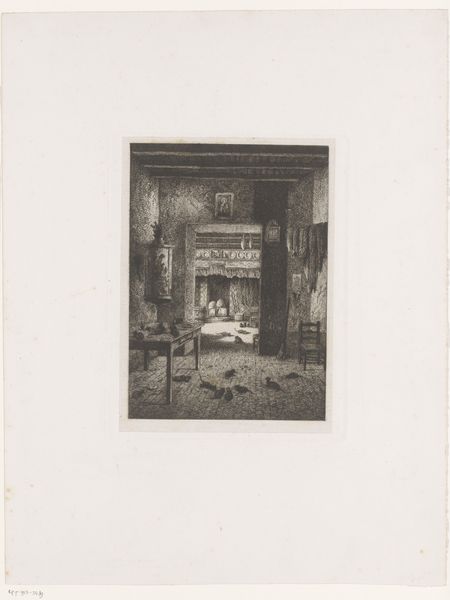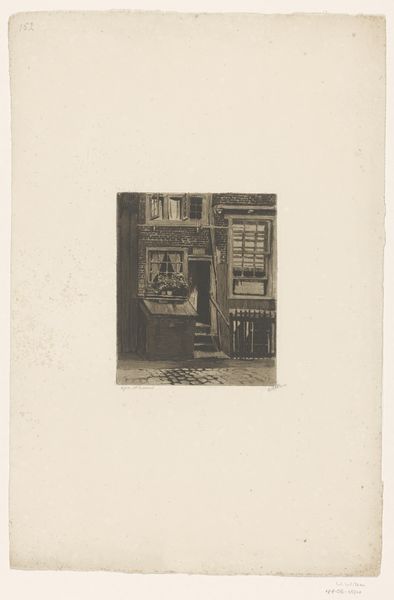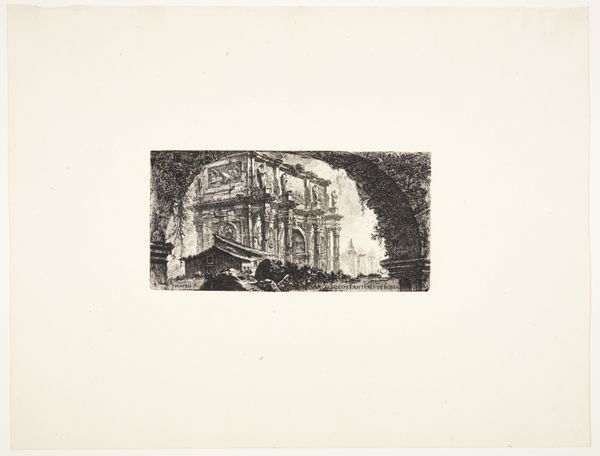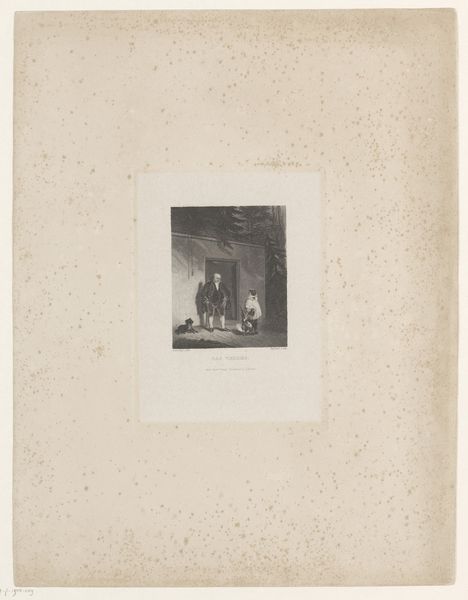
Dimensions: height 278 mm, width 307 mm
Copyright: Rijks Museum: Open Domain
Curator: Gazing at Willem Witsen's etching from around 1897, "View of Canal Houses in Amsterdam," I immediately feel a certain tranquility. There's a stillness in the water, reflecting… well, more like hinting at, the facades above. Editor: The atmosphere you mention, it's layered with socio-economic realities. Canal houses like these, despite their picturesque appeal, were at the heart of class divisions in late 19th-century Amsterdam. Did Witsen’s artistic circles reflect these tensions, or were they more focused on aesthetic pursuits? Curator: Oh, Willem definitely wasn't oblivious! I like to think of him as this quiet observer, processing the city's soul through art. His realism doesn't shy from decay; there's something beautifully honest about that. Plus, did you spot that little kitty strolling by? Editor: I did. The presence of the cat, set against the backdrop of the water, perhaps it hints at themes of marginalization, who and what thrives on the fringes? The technique—the intricate etching—allows the artist to capture subtle gradations in light and shadow. Are there particular influences at play that helped the artist with these effects? Curator: You know, I feel like he channeled a dash of Whistler here, or perhaps some impressionist masters he bumped into while gallivanting across Europe. I am in love with the moody play between water, sky, and brick. Editor: The work engages with key aesthetic movements but its success lies in its specific contextual resonance with Amsterdam's socio-political sphere during the period, don’t you agree? Curator: Precisely. Beyond the pretty picture, it’s about that shared human space—the pride, the grit, and maybe a little bit of melancholic longing all swirling together. Editor: Thanks, those are very intriguing impressions of the artwork to consider.
Comments
No comments
Be the first to comment and join the conversation on the ultimate creative platform.
